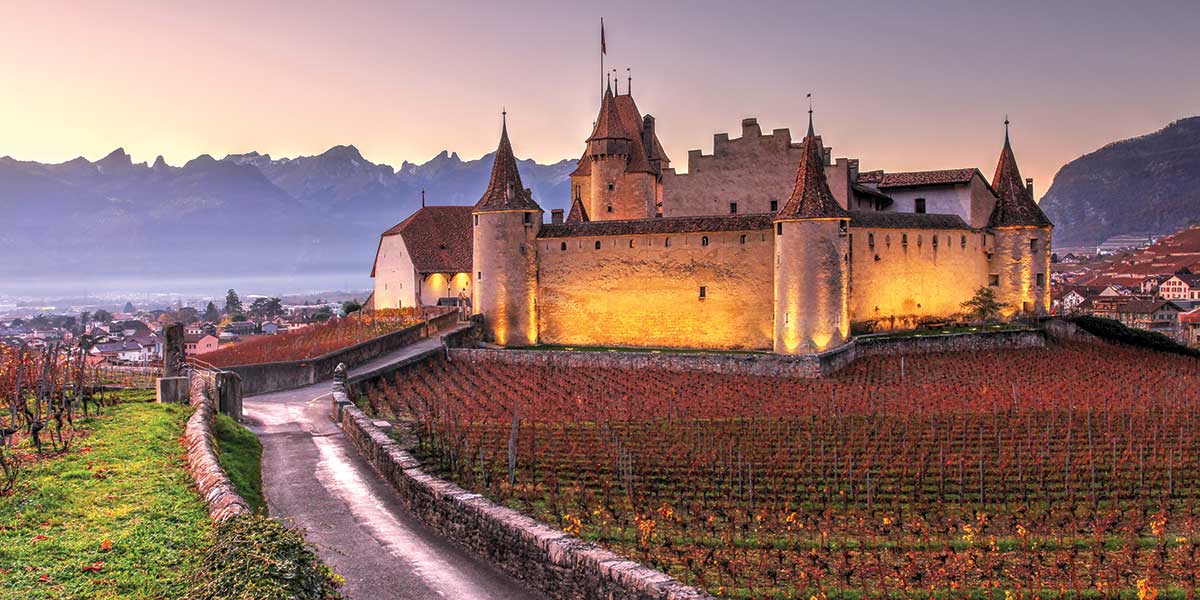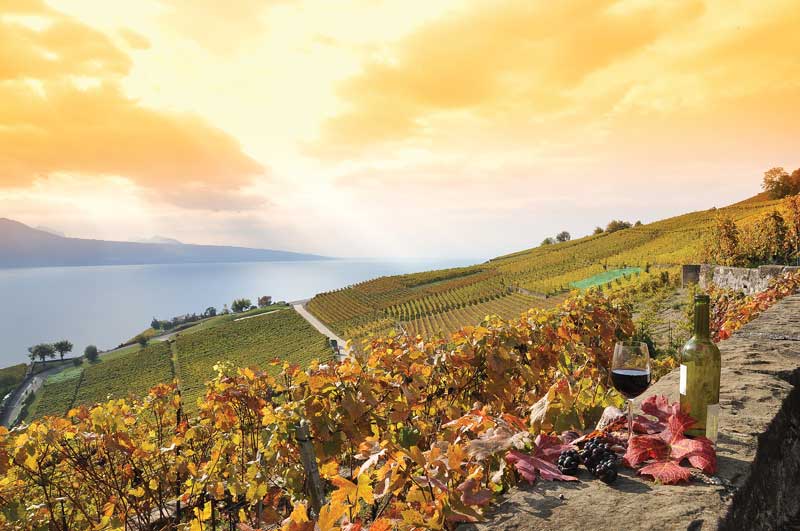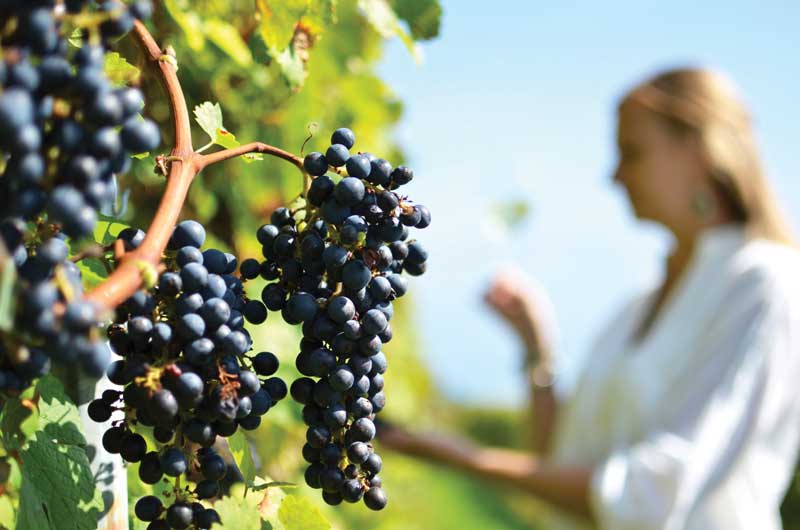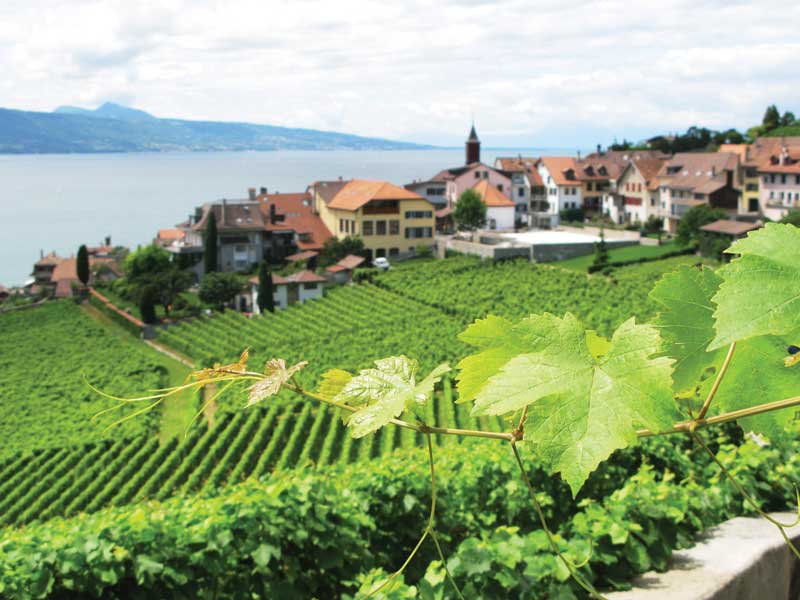The country has, for the most discerning gourmets, the excellent combination of limited production wines with delicate chocolates and its creamy and strong cheeses... Discover the pairing that Swiss culture represents!
The presence of the Alps in two thirds of its territory gives Switzerland a natural beauty, and de-spite its mountainous topography, it has developed a wine industry, with vineyards located in a rigorous order that give an extra charm to the landscape.
Wine production in Switzerland is limited in volume; more than 90% of what is produced by winemakers and viticulturists is consumed in the country itself, where native grape varieties of names perhaps unknown to some are cultivated: Amigne, Heida, Humagne Blanc, Räuschling and Bondola, among others. Therefore, to taste the wines of the Swiss Confederation divided into Cantons, you have to fly to its valleys and Alps.
The Swiss wine regions, despite the low temperatures, are defined by their particular climate and geographical position. The most renowned are Vaud, very close to Lake Geneva; Ticino to the south, bordering Italy; the Swiss-German area (concentrated in the creation of Pinot Noir) and to the west is the Geneva area.
Memorable experiences
Geneva is one of the regions that are worth visiting, since it concentrates the largest area of vineyards; located on the slopes of the Jura massif, where Watch Valley begins, it is the area where emblematic watchmaking firms such as Vacheron Constantin, Rolex and Patek Philippe, among others, were born.
Among the wine producers in this region are the brothers Patrick and Marc Favre, founders of Domaine des Grands Buissons in the 1990s. Currently, they have 22 acres of vineyards where they produce the Désirée wine, a muscat made with the Champenoise method, and the Chasselas, included in the selection of Geneva wines.
In Domaine du Chambet they obtain a suggestive Gewürstraminer, with a biodynamic viticulture. They also promote La Saline, from Chasselas vines on the La Merlinge plot in Geneva, on the Garmaise road. To complement the visits to the wineries, it will be necessary to close with a flourish by booking in the restaurants whose menus are temptations for the gourmand.
In the same city of Geneva is the restaurant Il Lago, with signature dishes designed by chef Massimiliano Sena, such as the Swiss lamb ribs accompanied by an onion Tarte Tatin and Parmesan ice cream as garnish; among the desserts you can find chocolates, a suggestion that is paired with sweet wines selected by chef sommelier Salvatore Salerno.
Salerno himself, of Italian origin, offers at Il Lago (and other spaces located at the Four Seasons Hotel des Bergues) up to 2,000 labels of wines produced in Switzerland, France, Italy, Portugal, Germany and Spain, among other countries.
The restaurant L'Aparté, headed by chef Armel Bedouet, has an unmistakable cuisine, worthy of a Michelin star, where wine tastings are provided by chef Bedouet himself.
Valais and its award-winning wines
Valais is another productive canton in terms of viticulture, where many winemakers experiment with local grape varieties as well as the well-known ones: Gamay, Syrah, Merlot, Pinot Noir and Chardonnay. Its vineyards extend over 62 miles along the Rhone River. It is an open valley that enjoys the protection of the Alps; these alpine conditions can also be observed in the Upper Valais, and in this area, farmers have built irrigation canals fed by water coming directly from the mountain.
Valais is the only canton that can afford to name a grape variety as Fendant, the old name for Chasselas, the representative white grape variety of Switzerland, introduced to this country in 1848. It is grown in the cantons of Vaud, Valais, Geneva and Neuchâtel, and is an excellent accompaniment to fondue, the traditional Swiss dish.
From this appellation, the sweet wine Mitis Amigne de Vétroz Grain Noble, from the Jean René Germanier winery, has been exported; made from Amigne grapes, it has an aromatic expression reminiscent of candied oranges, honey and quince. It is harmonious with blue cheese.
The figures are surprising when we talk about the fact that in Valais there are just over 12,355 acres of cultivated land, where 20 thousand winegrowers plant grapes, but only 500 of them produce wines. This is a reflection of the dilemma faced by the Swiss wine industry: it is an expensive business, vineyard areas are relatively small – there are just over 35,800 acres in the whole country – and the wine supply is limited, when it is known that Switzerland is one of the largest consumers of grape derivatives, with more than 8 gallons per capita per year.
However, just like chocolates, cheeses and watches, when the Swiss make something, they put a lot of effort into it, and the same happens with wines. They have boutique labels that at the 2021 Concours Mondial de Bruxelles won gold medals, clarifying that they are wines belonging to the AOC Valais appellation: Pinot Noir Champs Fleuri 2020, from the house of Jean-Louis Mathieu; Syrah Martigny Les Serpentines 2018, from Domaine Jean-René Germanier; Assemble Rouge Stricto Sensu 2015, from Philippe Varone Vins; and Cuvée Prestige Hurlevent 2018, from Les Fils de Charles Favre. One more reason to schedule that desired trip to the vineyards that benefit from the waters of the Rhône and the Alps, and the incredible stubbornness of the Swiss.
Text: Cindy Agustín ± Foto: PBogdad, Astra 490




